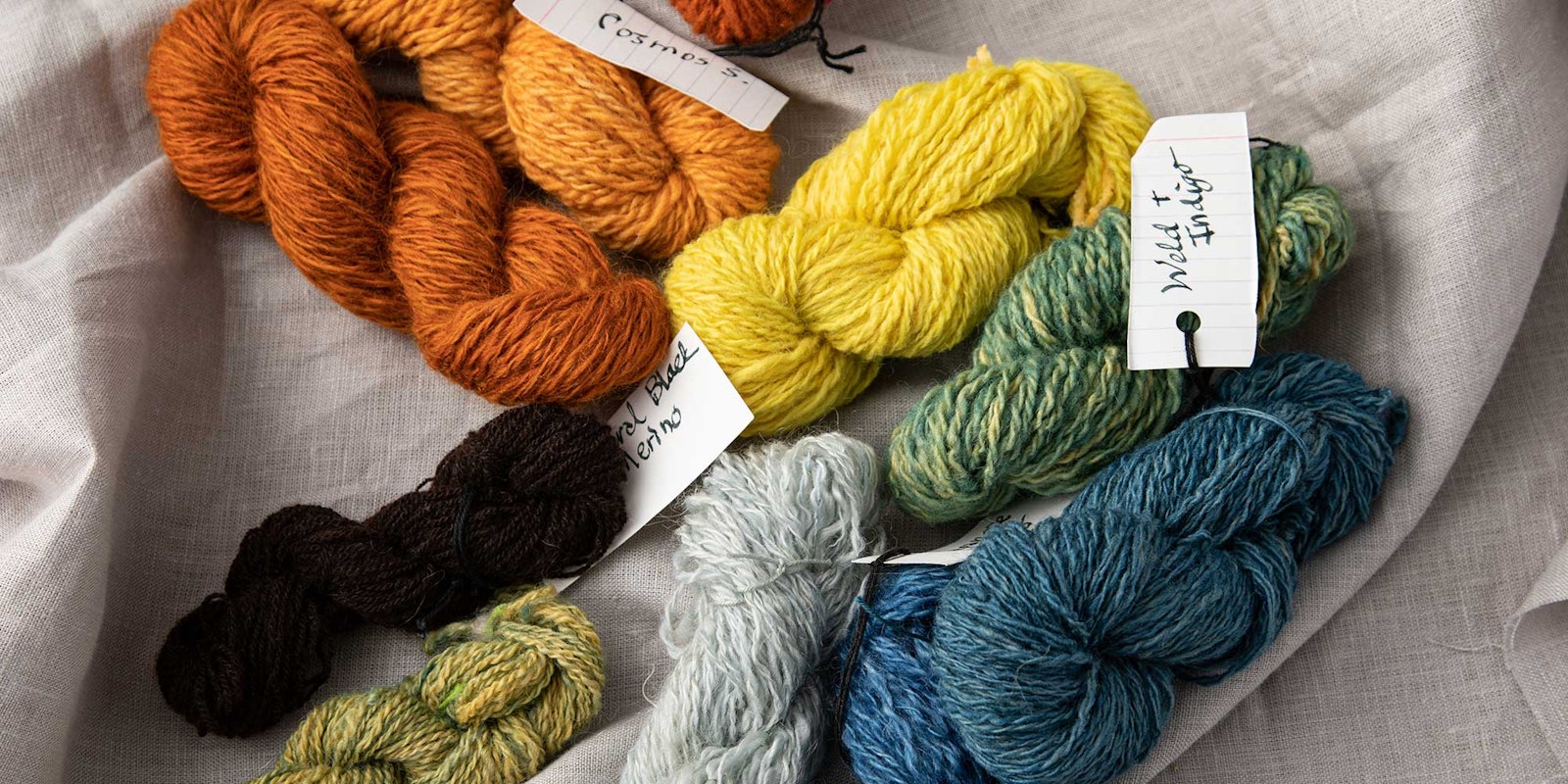In her new article “Color Tools: A Spinner Explores,” Ellen shares 5 great ways that spinners can gain a deeper understanding of color theory. Using examples from her own personal spinning journey, she welcomes you to make it your own! We thought you’d love to see another example of Ellen’s inspiration and resulting handspun handknits. —Editor
Josef Albers, a member of the Bauhaus group in Germany during the 1920s, offered eye-opening exercises in his influential 1963 book, Interaction of Color. Albers walks the reader through color exercises, many of which can be adapted to spinning and fiber rather than colored papers as Albers used.

Notice how the center square interacts differently with each of the two background colors in this example based on Albers's color study.
One of the principles Albers describes in the book is the “1 color appears as 2” effect. If you have not seen this exercise before, a quick web search will provide endless examples. There are many iterations, but the first step is to select two different background colors. Then, select a third color. When the third color is given the opportunity to interact with each background color separately, it will appear different to our eyes—as if there are four different colors and not just three. This is the interaction of color.
As I explored this exercise using handspun, I found that a fuzzy handspun yarn in a bumpy garter-stitch fabric and not flat surface of stockinette fabric proved a greater challenge. In the end, I found that a strong value difference (the relative lighteness or darkness of a color) helped with the “1 color appears as 2” effect. So, I set out to design a cowl.
Ellen’s ode to Albers. Möbius garter-stitch cowl.
Fiber Prep
I decided to use a stash treasure of dyed kid-mohair locks that were so very tempting. Handcards proved my tool of choice for initially mixing colors. I first mixed colors to produce the dark color blocks. Then, I mixed some of those colors with white fiber to create tints. For each, I blended 2 to 4 colors to achieve a rich, tweed effect. For example, to create a dark red violet, I combined a dark purple that had red undertones with raspberry and a very dark maroon. The result was a complex, dark purple.
I wanted to have a group of colors to experiment with Albers “1 color appears as 2” principle with tweed blocks spaced between. I also wanted to finish my project with a picot edging. So, I continued exploring with color on my handcards until I had developed enough yarn in a palette that I liked.
Spinning and Knitting
I wanted to keep a gentle halo in the mohair yarns, so I spun all my singles with a relaxed backward draw into 2-ply yarns. I knitted my cowl following Elizabeth Zimmermann’s wonderfully simple Möbius cowl recipe. Start by knitting a scarf flat in garter stitch. When it reaches the desired length, give it one twist and join the two ends seamlessly with a tapestry needle.
Read Ellen’s full article on finding color tools that work for you in the Fall issue of Spin Off 2021.

